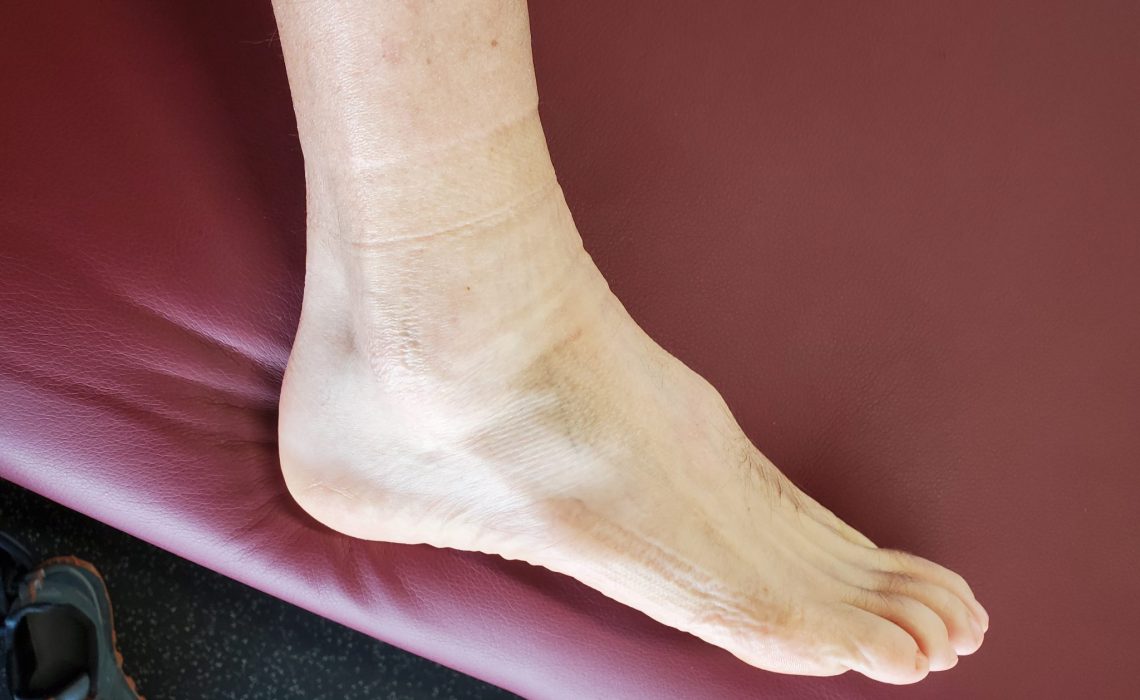Addressing Ankle Injuries

Ankle Injuries
Youch!! You did it just as the hike was getting good. You rolled your ankle on that curiously round stone that you saw a moment earlier knowing you should avoid it. But it happened and you now have to somehow hobble back to your car for a long ride back home. Before you settle on the thought that all is lost, let’s take a look at some common ankle injuries that can affect even the most seasoned activity seeker.
The Lateral Ankle Sprain
Lateral means “of, at, toward, or from the side or sides.” In this case, a lateral sprain affects the outside of your ankle and foot. If you step on an object that causes your foot to roll away from you and your body goes in the opposite direction of your foot, that is a lateral sprain. To determine if the injury needs attention, consider the following:
Is there pain? If you gently press on the outside of the foot around and below your ankle bone, the calcaneus, and it is painful, you should seek out a physical therapist. Same is true if one of the five long bones of the forefoot, the lateral most metatarsal just below the little toe, hurts when touched, seek out a physical therapist
Can you walk? If you can take more than four steps on the injured foot, then you may not need to seek attention right away. If you cannot walk on the injured ankle for more than four steps, then get the ankle checked out by a physical therapist.
The Forefoot Injury
The forefoot is the part of your foot that has five long bones, or metatarsals, just below where the toes hinge. These long bones act as torsion bars that help the foot adapt to uneven surfaces in an effort to help stabilize the foot. If you stepped on something with your forefoot that causes you to roll your ankle, you may have injured your forefoot. Like with the above considerations, if the bottom of your forefoot is painful when touched, or the outside long bone below the little toe hurts when pushed on, you may have a forefoot injury that needs attention. In addition, if you cannot take more than four steps on the injured foot without pain, you may have fractured one of those long bones.
If after the injury happens and you can take more than four steps, and actually walk on it, you may be okay. If this is the case, keep your hiking boot or shoe or sock on until you get home because the boot or sock acts as a compressive aide to keep swelling down. If you were barefoot or in sandals when the injury occurred, then you’ll want to ice the injured ankle or foot for no longer than 20 minutes as soon as you can and then wrap it to provide compression to keep swelling at bay. To remember what to do, consider the acronym R.I.C.E. R is for “rest.” Rest your ankle and foot. I is for “ice.” Ice your injury for 20 minutes to reduce swelling while resting it. C is for “compression.” After icing it, wrap it with a bandage to provide compression which helps reduce swelling and provides support. E is for “elevation.” Keep it elevated while resting, icing, and wrapping the injured ankle to help reduce swelling.
If after three or four weeks and your ankle continues bothering you, then come see one of our physical therapists to get an evaluation and see what can be done to help you get back out there doing what you love.
Ankle injuries are common and they can be prevented with proper strengthening and coordination. Our physical therapists and personal trainers can help you with preventing future ankle injuries with an exercise plan customized for you and your favorite activities. Contact Altru Integrated Health today for free consultation.
Written by: Greg Asbee, Fitness Director

